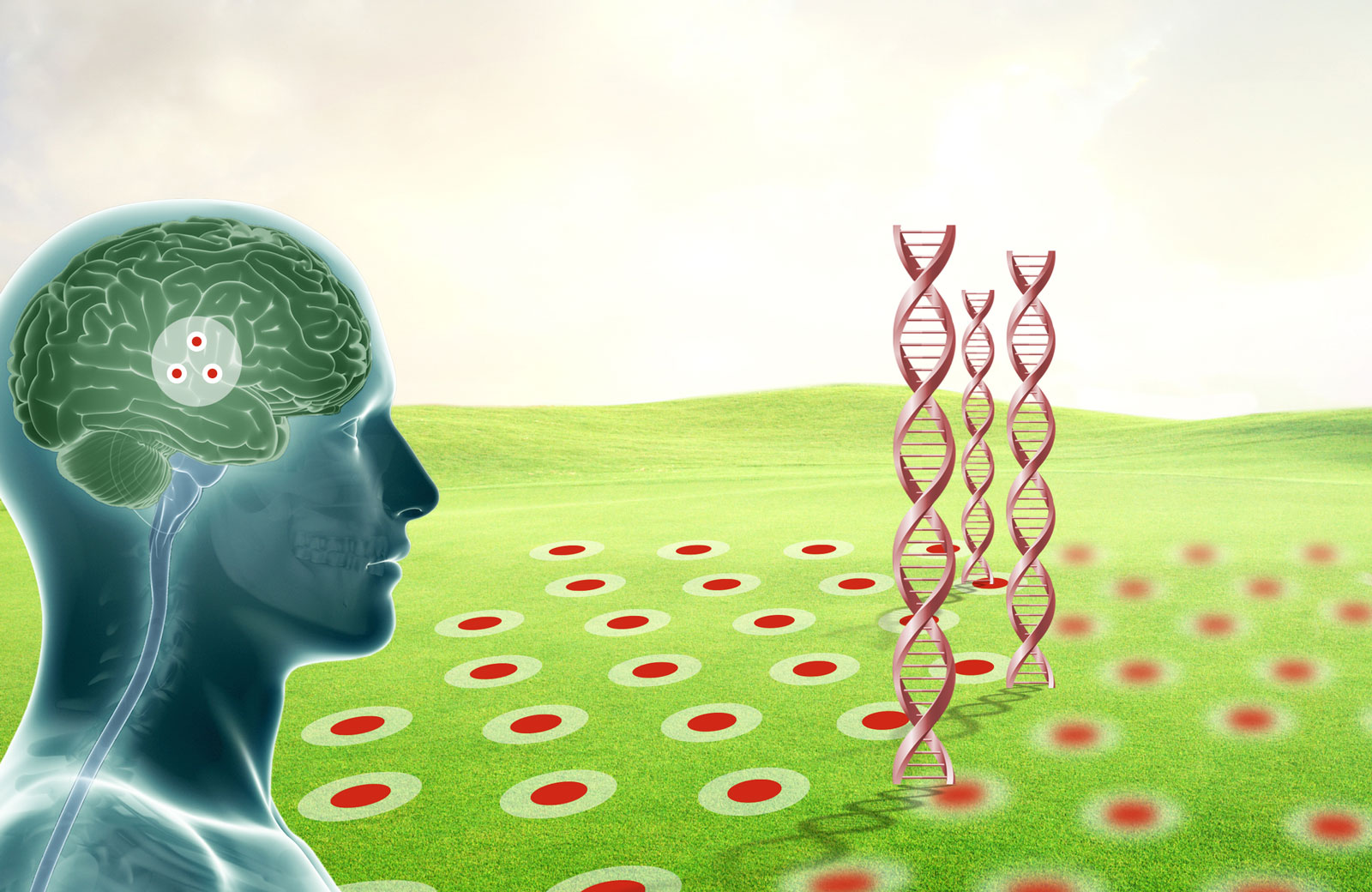Alzheimer’s patients suffer from severe memory loss and disorientation. An international research team led by Christian Doeller (Donders Institute, Radboud University, Nijmegen, The Netherlands) and Nikolai Axmacher (Ruhr-Universität Bochum, Germany) has now shown that a genetically increased risk for Alzheimer’s disease affects a brain region known as the “GPS” of the brain already in healthy young adults. The results were published in the journal “Science”.
More than 5 million people in the US are currently suffering from Alzheimer’s disease and 30 million worldwide. This number could rise to above 100 million by 2050. The as of yet incurable disease represents a major burden for patients and their families and challenges the health system. Alzheimer’s disease is caused by an interaction of factors – among others a certain variant of the APOE gene: one in six people carries this variant and has a three-fold increased risk to develop Alzheimer’s disease. Currently, there are few treatment options for Alzheimer’s disease, potentially because drugs are given too late when large parts of the brain are already affected.
Therefore, currently great efforts are undertaken for the early detection of Alzheimer’s disease. There is however a crucial problem: precisely the brain region that is affected first by Alzheimer’s disease – the so-called entorhinal cortex – is still very poorly understood in humans. The situation is quite different in animals: Last year’s Nobel Prize in Medicine was awarded for unravelling the function of the entorhinal cortex. So-called grid cells were discovered, cells which fire in a hexagonal grid pattern and are believed to play an important role in spatial navigation. In humans, however, it is usually not possible to measure the activity of individual nerve cells. However, Christian Doeller showed in a groundbreaking study in the journal Nature in 2010 that with imaging techniques (fMRI), the “grid cell” system can be indirectly detected in humans when volunteers navigate in a virtual environment. This method was now used to investigate the “grid cell” system in groups with and without the critical APOE risk gene in the entorhinal cortex of young students. “The risk-takers showed a less stable grid pattern in the entorhinal cortex – and that decades before the possible onset of the disease,” says Lukas Kunz, who carried out the experiment. Tobias Navarro-Schröder from the Donders Institute, who participated in the study: “In addition, the risk carriers were less frequently moving in the middle of the virtual landscape, suggesting a change in navigation strategy.” Finally, in the risk group, the brain activity was increased as a whole in the memory system, which could in the short term compensate for the reduced grid pattern, but in the long term contribute to the development of Alzheimer’s disease. According to Doeller, who co-led the study, “these findings contribute to a better understanding of early changes in Alzheimer’s disease”. “Now we need to test whether similar changes also occur in older people with early Alzheimer’s disease and whether they can be influenced by drugs,” said Axmacher.
For more information, see:
Kunz L, Navarro Schröder T, Lee H, Montag C, Lachmann B, Sariyska R, Reuter M, Stirnberg R, Stöcker T, Messing-Floeter PC, Fell J, Doeller CF*, Axmacher N* (2015). Reduced grid-cell-like representations in adults at genetic risk for Alzheimer’s disease. Science. (*equal contribution)
Abstract
Alzheimer’s disease (AD) manifests with memory loss and spatial disorientation. AD pathology starts in the entorhinal cortex, making it likely that local neural correlates of spatial navigation, particularly grid cells, are impaired. Grid-cell–like representations in humans can be measured using functional magnetic resonance imaging.We found that young adults at genetic risk for AD (APOE-e4 carriers) exhibit reduced grid-cell–like representations and altered navigational behavior in a virtual arena. Both changes were associated with impaired spatial memory performance. Reduced grid-cell–like representations were also related to increased hippocampal activity, potentially reflecting compensatory mechanisms that prevent overt spatial memory impairment in APOE-e4 carriers. Our results provide evidence of behaviorally relevant entorhinal dysfunction in humans at genetic risk for AD, decades before potential disease onset.
Research published in: Science
Research in cooperation with: Axmacher lab, Ruhr-University Bochum, Germany
Research funded by: ERC; NWO


